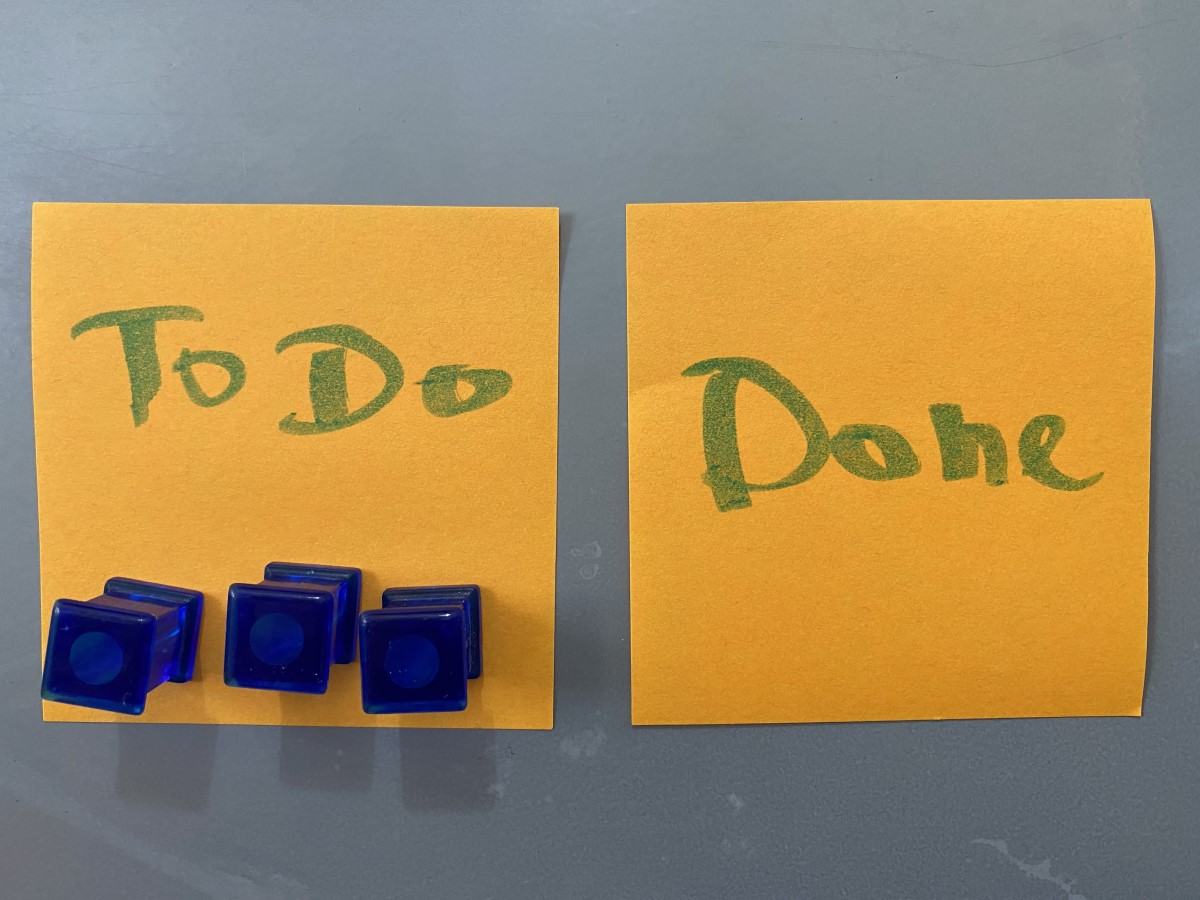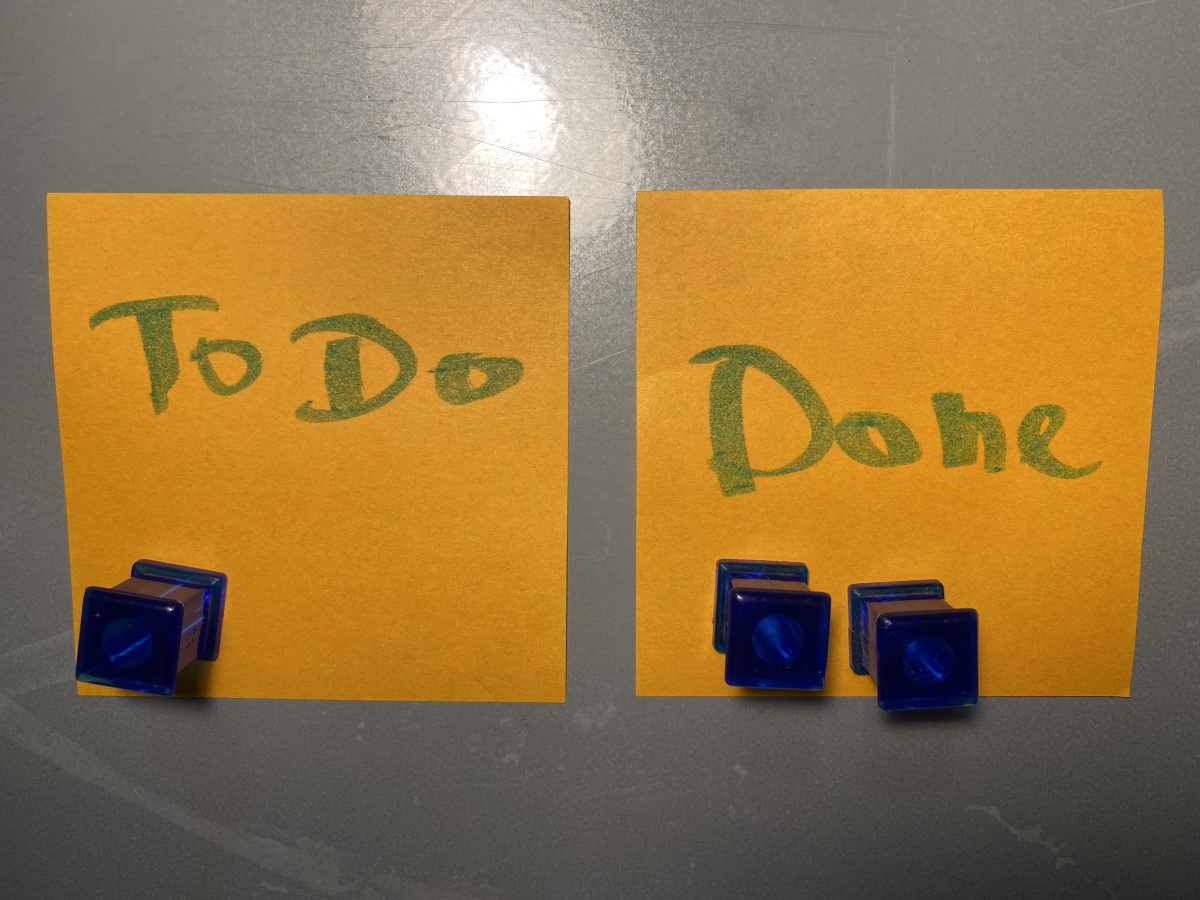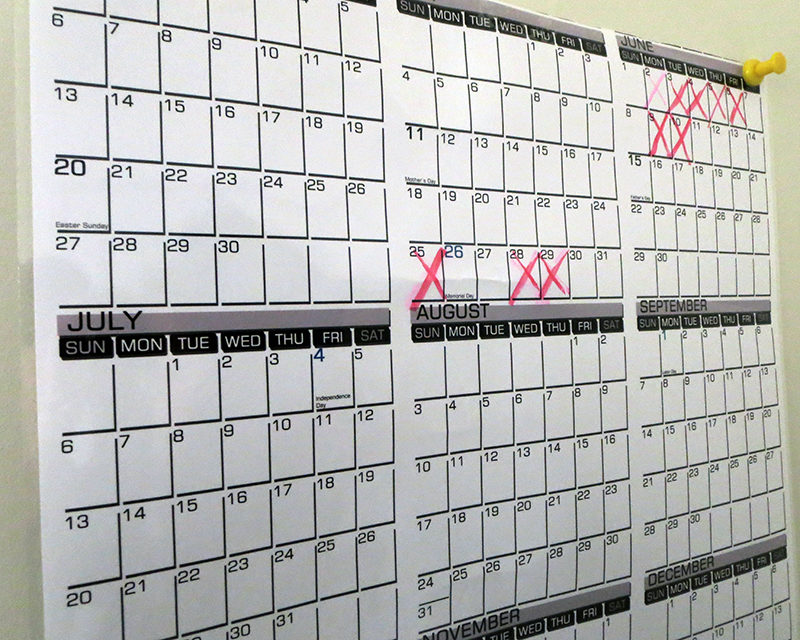How to track habits even if you hate habit tracking
During my burnout recovery journey, one of my most humbling realizations was that I was part of the problem. I had to take a good hard look at my behaviors and habits, and identify where I was creating part of the stress and pressure. I’m a Gretchen Rubin Rebel, so I resist all kinds of expectations, and I hate habits, repetition and routine, even if they’re good for me.
A few years ago I had to come to terms with the fact that my belief that I don’t have any habits (other than religiously flossing) was false. Not having a routine doesn’t really mean that I didn’t have habits. Rather, I had habits that weren’t serving me.
For example, I woke up every morning, took my phone off of Airplane Mode, read messages and the news while still in bed. The problem wasn’t just that I wasn’t eagerly jumping out of bed to drink lemon water, meditate and exercise (= “good habit”), rather, I had a strongly repeated and reinforced habit that brought me down. For someone else, this could have been an enjoyable and relaxing way to start the day, afterall, a habit isn’t good or bad in and of itself. It was a “bad habit” for me because it wasn’t making me happy, but first, I had to realize that it was actually a habit.
Of the million books about habits out there, my favorite by far is James Clear’s “Atomic Habits.” I find that his analysis resonates with me most, and therefore is easiest to incorporate.
Like many others, he too mentions how useful it is to track habits (people who keep a food diary lose twice as much weight and keep it off longer, blah, blah) but he also recognizes that some people (me! me!) resist tracking altogether.
If you tell me that I need to track my food intake for a week, I immediately fall asleep and want to kill myself at the same time. It’s that bad.
If I had to actively track workouts, I wouldn’t do them in the first place. Some of my apps track workouts for me. Even then, I resent the idea of someone looking over my shoulder, despite that someone being me.
I’ve always felt ashamed by how badly I respond to tracking. Many people are familiar with Jerry Seinfeld’s “don’t break the chain” method. Seinfeld committed to writing one joke a day, regardless of whether it was funny or not. He used a large yearly wall calendar, and a big read magic marker. Every day he wrote a joke, Seinfeld crossed that day off big red X. Soon, the X’s created a chain. Then, he focused on not breaking the chain.
It’s a classic example of compound interest. Getting into the habit of writing every day, even if you write only one joke, leads to better results than sitting down once in a while and trying to come up with dozens of jokes in one session.
(The photo above is from blogger Eddie’s report of how he used the method.)
I get that, of course. It makes total sense. Still the prospect of a full-year wall calendar and a red magic marker make me want to quit before starting. Maybe like my physical near-sightedness, and my preference for near-future visualizations, here, too, I need a short-term goal and tracking mechanism.
James Clear, thankfully, understands people like me. His first insight is that habit tracking requires adopting two habits, not one. The habit itself, and the tracking habit. Still, he says, you should try it at least for a few weeks. Why? Because tracking habits make the new behavior you’re trying to adopt obvious, attractive, and satisfying.
He gave a few examples in the book about tracking daily behaviors not day-by-day, but rather, throughout a single day.
That, I thought, might be doable.
One of my goals is to do my most important 3 tasks of the day as early as possible, and to complete them before moving on to other tasks. (Combine the fact that I’m a late riser with remote learning kids, people, and this one is a challenge!) I was looking for something that would be obvious, attractive, and satisfying.
After toying with ideas of 3 marbles in two glass jars, or bracelets that can be moved from one arm to the other, I finally came up with a super simple (albeit not super attractive) version of my new Daily Habit Tracker:
I stuck two simple post-its to my magnetic message board, and grabbed 3 identical magnets. I start the day with all the magnets on the To-Do sticker, and one by one (when I’m successful) I move them to the Done sticker.


It is so simple, but unbelievably satisfying! It is also an excellent visual reminder of where I am in my most important tasks, not to be confused with the dozens of urgent tasks that I also deal with every day. Right in front of my eyes.
I absolutely love it, and I feel relieved that even I can manage a little habit tracker of my own…
What do you think?? Try it and let me know! Reply or comment below.



I’ve been pondering abstractly for a while on what I could do that’s like your idea. Love it! I’ve got the post-its, the magnets, and the board. 😀
So simple, right??
And anything post-it has an air of productivity already… 😀
i HATE habit tracking and following rules, but I LOVE this idea! I’m gonna give it a try!
Rules, YUCK!!
So happy that a fellow rulebreaker likes this idea!
This is awesome! Funny story – I used to have a massive wall calendar that I used to track my key daily meditation habit. I actually really liked how visual it was and it really kept me motivated to keep the streak going. There’s definitely something to making your progress visual and physical, and the magnets are a great idea!
I would guess that you have enough patience and peseverence for the full year calendar, Peter…. 🙂 I wish I could be like you! Maybe one day when I grow up. Meanwhile I’m starting small.
I have come to really love habit tracking. I float between questioner and obliger in Gretchen Rubin’s world. I track a few key things – walking, reading, my weekly blog post, yoga (2x/week), and I’m perpetually on WW so I track my food. Oh and I’m doing intermittent fasting so I have an app for that as well. I love keeping the chain, especially when I’m keeping the chain for behaviors and habits I want to build and that are related to the best version of me I want to be. My daughter is the Gretchen Rubin rebel, however, so I might need to share this with her. 🙂
Oooh! Fascinating! Tell me if it helps your daughter.
As a habit tracking maven AND a rebel, I completely appreciate this suggestion. It makes all the sense! Reminds me of that marvel, the Kanban board, as well.
Good call! Post its moving forward on the board, displaying progress…
I did that for myself for a while, but notes were getting stuck too often, which lowered my motivation rather than improving it.
Love this simple way of tracking. Also highly recommend Atomic Habits by James Clear, and his weekly newsletter is so worth adding to your inbox!
I’m so weary of more newsletters and more overwhelm, that I think I added him to my secret account… https://shlomittassa.com/2020/06/10/ever-considered-this-my-big-email-secret/
Now I need to check it every once in a while. 😉
But yes, he is GOOD!
Love it. The physical/tactile version is something I don’t often get. I mostly just use the Habit Bull app but it means I have to keep my phone handy!
This one is completely analog! And so much more fun!
If I can be really specific – these are super strong magnets, so I actually have to exert some force to move them from one post-it to the other. It adds to the tactile experience, and makes it even more rewarding!
I love this! And I sooooo relate to your story – I too was overwhelmed and felt like I didn’t have any habits….only to realize what I had was mostly a bunch of bad habits. What helped me was reading “The Power of Habit” and recognizing that I had one positive keystone habit, journaling, that I could leverage into other, better habits. I chose to track my habits (and time) in my journal. It was eye-opening. This work is so important and there’s not one right way to do it – you gotta find the way that works for you! I love how you approached tracking your habits – simple, powerful and fitting for you!!
You’re so right! The trick is tailoring the work you’re trying to do to your own strengths, and not berating yourself for not being Jerry Seinfeld… 😀 😀
I, too, read “The Power of Habit” and was really excited about it, but it didn’t translate into action as easily as “Atomic Habits”. Maybe its because my single (keystone?) habit is flossing at night, and there’s only so much you can do with that. Although I have used it to habit stack, I’ll write a diffferent post about that at some point…
I love this idea, Shlomit! I love tracking my habits, and I love not breaking the chain, but the simplicity of this combined with your ability to see it every time you sit at your desk is brilliant! I’ll have to adapt it. Thank you!
I have a feeling it might work even better for someone like you, who enjoys tracking and has incorporated it already!
Do let me know!
Tello is the closest I have gotten to taming the rebel who hates tracking. Love your cheat post it form!
I’ve played with Trello a couple of years ago, but it didn’t stick. I think it quickly became too visually overloaded for me.
This may actually work for me! I’m not a Rebel, but I am not attracted to habit tracking (though I love the Clear book.) I’m going to make my Post-Its and magnet set-up right now!
Try magnets that are fairly strong! It makes the process of moving them more rewarding.